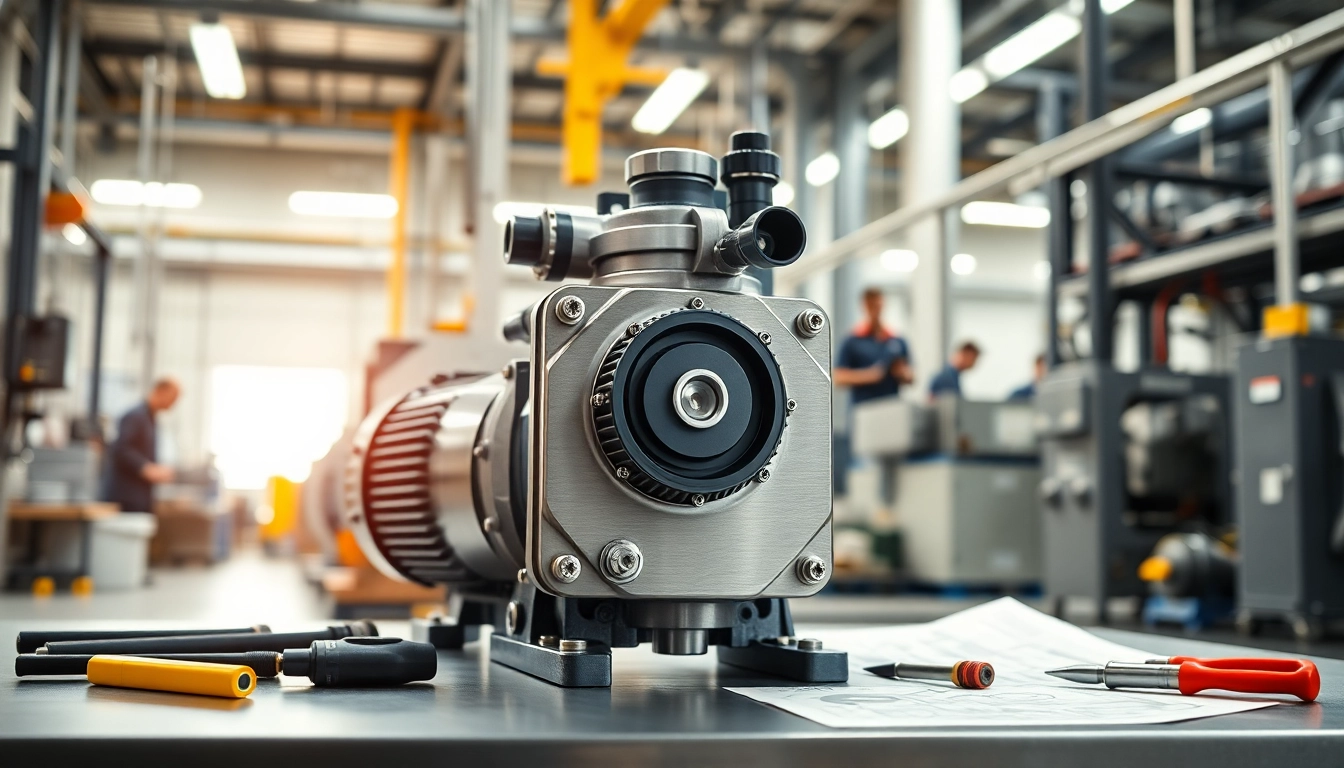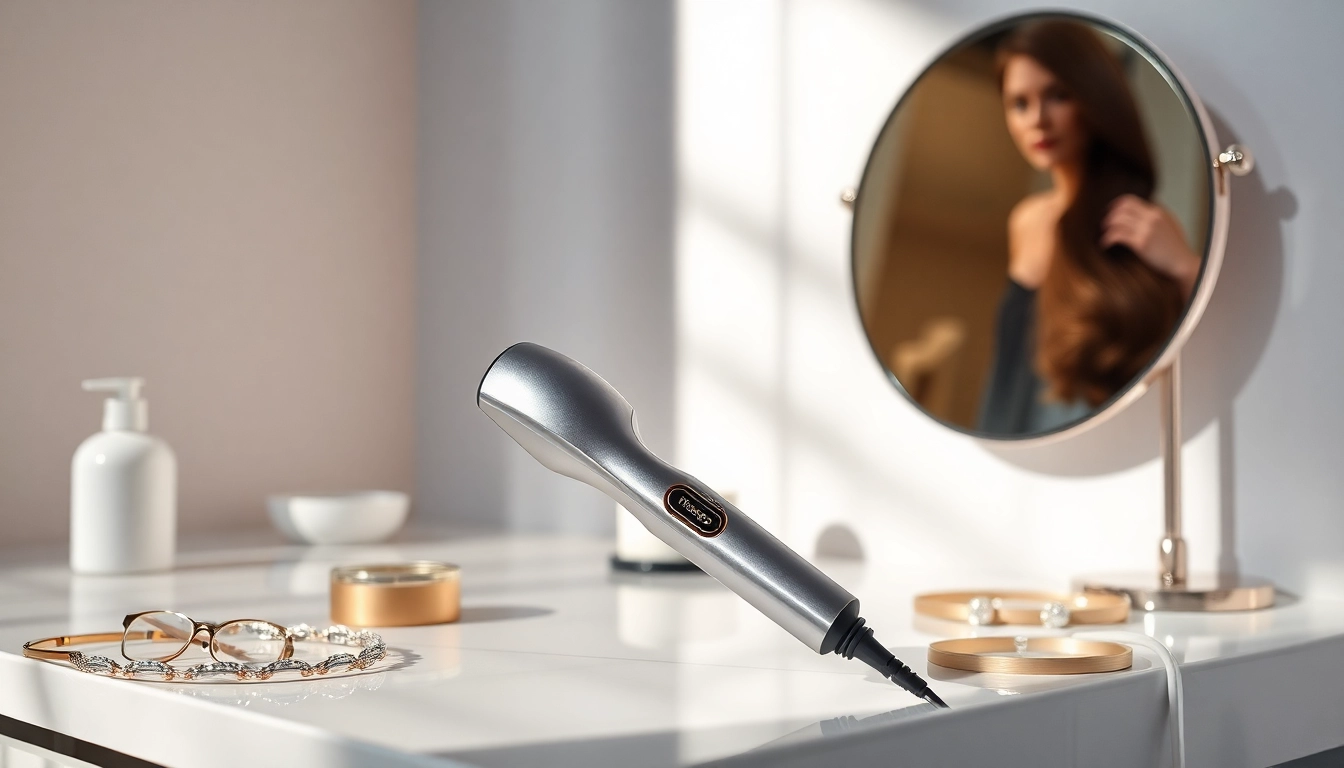Introduction to the Bruker EOS 500 Handheld LIBS Analyzer
The Bruker EOS 500 Handheld LIBS Analyzer represents a significant advancement in material analysis technology, offering unparalleled capabilities for professionals across various sectors. Utilizing Laser-Induced Breakdown Spectroscopy (LIBS), this device allows for real-time elemental analysis and contributes to rapid decision-making in the field. As industries increasingly rely on precise materials assessment, the EOS 500 stands out for its accuracy, portability, and ease of use.
Understanding LIBS Technology
Laser-Induced Breakdown Spectroscopy (LIBS) is a powerful analytical technique employed for the identification and quantification of elemental composition in various materials. The process involves focusing a high-energy laser pulse onto the sample surface, creating a plasma. This plasma emits light, which is then analyzed through spectrometry to determine the elemental makeup of the material.
The advantages of LIBS technology include its capability to inspect materials in various forms—solids, liquids, or gases—and at varying scales and complexities. Unlike traditional spectroscopy techniques that often require extensive sample preparation or are limited to laboratory settings, LIBS can be performed in situ, proving invaluable for on-site testing.
Applications of LIBS in Different Industries
LIBS technology finds extensive applications across multiple industries:
- Mining and Metallurgy: Used for assessing metal compositions and identifying impurities, LIBS helps in optimizing extraction processes.
- Environmental Monitoring: Analyzing soil, water, and air samples to detect pollutants and ensure compliance with environmental regulations.
- Manufacturing: Quality control in the production processes, ensuring the materials meet required standards and specifications.
- Hazardous Materials Handling: Functioning as a rapid assessment tool for identifying hazardous substances in various environments.
- Archaeology and Art Conservation: Critical for the analysis of ancient materials, allowing conservators to understand artifact compositions without damaging them.
Advantages of Using the Bruker EOS 500
The Bruker EOS 500 handheld LIBS analyzer boasts several advantages that make it a preferred choice among professionals:
- Portability: Its lightweight and compact design allows for easy transport to remote sites, making it ideal for field analysis.
- Rapid Results: The device provides immediate feedback, allowing users to make quick decisions based on real-time data.
- High Sensitivity: The EOS 500 can detect trace elements in various materials, offering depth in analytical capability.
- User-Friendly Interface: Equipped with an intuitive touchscreen and simplified navigation, it caters to both novices and experienced users.
- Versatile Applications: Capable of analyzing a wide range of materials, it enhances its usability across various fields.
Key Features of the Bruker EOS 500 Handheld LIBS Analyzer
Performance Metrics and Specifications
The Bruker EOS 500 is engineered with high-performance specifications that cater to demanding analytical needs. Key features include:
- Detection Limits: Capable of detecting elements at levels in the parts per million (ppm) range.
- Robust Laser System: Utilizes a 1064 nm Nd:YAG laser, ensuring consistent power and effective ablation of material.
- Wide Element Range: Supports the analysis of various elements across the periodic table, including metals, non-metals, and metalloids.
- Software Capabilities: Comes with proprietary software for data interpretation, offering customizable reporting options.
- Battery Life: Long-lasting battery support for extended fieldwork without interruptions.
Portability and Usability in Fieldwork
One of the most significant advantages of the EOS 500 is its portability. Designed for fieldwork, the analyzer features:
- Compact Design: Fits easily into a backpack or carrying case, upholding the needs of mobile professionals.
- Ergonomic Handle: Enhances comfort during prolonged use in diverse environments.
- Rugged Construction: Built to withstand harsh conditions, including moisture and dust, ensuring reliable performance outdoors.
Comparison with Other Analyzers
When comparing the Bruker EOS 500 with other handheld LIBS analyzers, certain distinctions become evident:
- Accuracy: The EOS 500 is often recognized for its superior calibration and data consistency compared to competitors.
- Speed: Offers faster testing times, essential for industries that require quick turnarounds.
- Ease of Use: Its user-friendly interface and minimal learning curve allow operators to maximize efficiency with minimal training.
How to Operate the Bruker EOS 500 Handheld LIBS Analyzer
Step-by-Step Setup Guide
Operating the Bruker EOS 500 requires following precise steps to ensure accurate readings. Here’s a step-by-step guide:
- Charge the Device: Before using the analyzer, ensure that the battery is fully charged.
- Power On: Press the power button to activate the device, and allow it to initialize.
- Select Operation Mode: Choose the appropriate mode based on the material to be analyzed.
- Calibrate: Follow the calibration instructions to ensure accuracy. Use the included reference materials for adjustments.
- Prepare the Sample: Ensure that the sample surface is clean and free from contaminants.
- Conduct the Analysis: Aim the laser at the sample, press the trigger, and observe the reading on the display.
Best Practices for Sample Analysis
To achieve optimal results when operating the EOS 500, consider the following best practices:
- Surface Preparation: Ensure that samples are flat, dry, and free from coatings that may interfere with readings.
- Optimal Distance: Maintain the recommended distance from the sample surface to achieve the best ablation and analysis results.
- Regular Calibration: Regularly calibrate the instrument before using it, especially when changing materials.
- Environmental Considerations: Be aware of environmental conditions such as humidity and temperature, which may affect performance.
- Documenting Results: Keep detailed records of the analysis for future reference, especially when testing multiple samples.
Troubleshooting Common Issues
Even the best equipment may encounter issues. Here are some common problems users may face with the Bruker EOS 500, along with their solutions:
- Inconsistent Results: Ensure proper calibration and check for sample contamination.
- Device Not Powering On: Check battery charge and ensure connections are secure.
- Software Malfunctions: Restart the device, and if the issue persists, consult the user manual for software repair tips.
- Interference with Readings: Assess the environment; avoid using near sources of electromagnetic interference.
Case Studies and User Testimonials
Successful Implementations in Industry
Real-world applications of the Bruker EOS 500 illustrate its effectiveness across various sectors. For example, a mining company implemented the EOS 500 to assess ore samples directly at excavation sites. This resulted in a 30% reduction in analysis time, facilitating quicker decision-making and optimized sorting of materials.
In another instance, an environmental consultancy used the EOS 500 to measure contaminants in soil near industrial sites. The rapid testing capabilities allowed for timely reporting, significantly enhancing their response strategies to potential environmental hazards.
User Experiences and Feedback
User feedback consistently highlights the EOS 500’s reliability and efficiency. A quality control manager in the manufacturing sector noted, “The EOS 500 has transformed our raw material assessment process; we can now detect issues before they affect production.” Additionally, users have expressed appreciation for the device’s ease of use, citing that even new staff members can operate it effectively after minimal training.
Impact on Workflow Efficiency
Quantitative data from users demonstrates notable improvements in workflow efficiency. The ability to conduct instant analyses means companies can reduce downtime related to external lab testing, thus accelerating production cycles. Furthermore, organizations have reported decreases in material wastage due to improved quality control facilitated by the EOS 500’s fast and accurate readings.
Future Trends in Handheld LIBS Technology
Emerging Innovations and Developments
The field of handheld LIBS technology is rapidly evolving, with trends focusing on enhancing accuracy, portability, and user engagement. Innovations include:
- Integration with AI: Future analyzers are likely to incorporate artificial intelligence for better data interpretation, leading to more insightful analysis.
- Improved Spectroscopy Techniques: Advancements in spectrometer technology promise higher resolution and enhanced detection capabilities.
- Increased Connectivity: With IoT integration, users may easily share data and analysis results in real-time from the field to the lab.
The Role of the Bruker EOS 500 in Advancing Technology
The Bruker EOS 500 is poised to remain at the forefront of these technological advancements. Its robust design and user-friendly interface make it adaptable to emerging trends, ensuring it meets the evolving needs of professionals who rely on precision and efficiency in their material analysis. Continuous software updates and support allow users to harness new capabilities as they develop.
Preparing for Upcoming Market Changes
As the market for handheld LIBS devices grows, staying informed about industry changes and technology advancements is crucial. Companies should consider training and upskilling their staff to keep pace with innovations, ensuring they can leverage tools like the Bruker EOS 500 effectively. Anticipating shifts in regulation and environmental requirements will also enable companies to use the latest technology to meet compliance quickly and effectively.















Leave a Reply